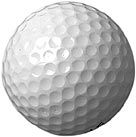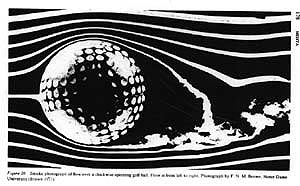Simple DC Motor DIY STEM Kit
$9.99$5.55
 No less than four principles are used to explain the movement of objects such as
golf balls as they travel through the air. Since air is considered a fluid, then
fluid dynamics, or the characteristics of moving fluids or objects moving through
them are described using a Reynold's number. This relationship is part of the
research done by British physicist Osborn Reynolds for which it is appropriately
named, and is a function of the viscosity of the air, the speed of the air and the
size and shape of the object moving through the air.
No less than four principles are used to explain the movement of objects such as
golf balls as they travel through the air. Since air is considered a fluid, then
fluid dynamics, or the characteristics of moving fluids or objects moving through
them are described using a Reynold's number. This relationship is part of the
research done by British physicist Osborn Reynolds for which it is appropriately
named, and is a function of the viscosity of the air, the speed of the air and the
size and shape of the object moving through the air.

 'Physics is mathematical not because we know so much about the physical world, but because we know so little; it is only its mathematical properties that we can discover.'
'Physics is mathematical not because we know so much about the physical world, but because we know so little; it is only its mathematical properties that we can discover.'